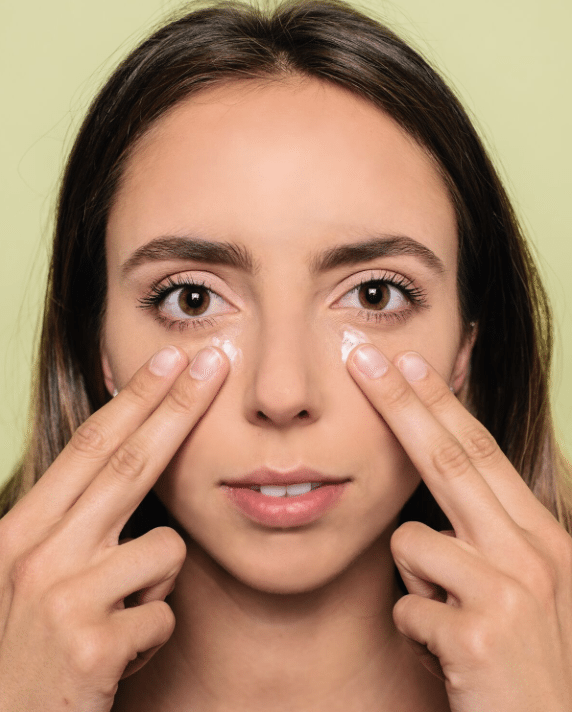Meet uneven skin tone: Our skin cells contain melanocyte cells, a cell that produces melanin, a chemical that gives skin its color. Too much melanin leads to hyper pigmented skin – including freckles, darkening of the skin in patches, and age spots. Hyper pigmentation can occur from over sun exposure, trauma to the skin (i.e. laser treatments, peels, etc.) or as a side effect of certain drugs. While hyperpigmentation is not a serious medical condition, it is one of the most common skin conditions and arguably the most difficult to treat and correct. We had a chance to sit down with Dr. G to better understand the root cause of hyperpigmentation and what we can do to prevent and treat this skin condition.

What is hyper pigmentation?
Hyperpigmentation is defined as any spot on your skin that’s dark enough to effectively stand out against the surrounding area. This phenomenon is usually the result of your skin’s efforts to protect itself from the harmful effects of ultraviolet light. It occurs when overexposure to sunlight causes the melanocytes in the deeper layers of your skin to produce cells that contain a skin-darkening pigment called melanin. These specialized cells known as melanosomes are picked up by your keratinocytes that are constantly migrating upwards toward your skin surface.
What causes hyper pigmentation?
Hyperpigmentation occurs when overexposure to sunlight causes the melanocytes in the deeper layers of your skin to produce cells that contain a skin-darkening pigment called melanin. These specialized cells known as melanosomes are picked up by your keratinocytes that are constantly migrating upwards toward your skin surface and cause the dark spots/areas. Hormones, birth control pills can also cause this and sunlight can increase the severity.
The different types of hyperpigmentation:
- Age spots or sun spots (sun damage)
- Melasma : caused by pregnancy, hormones and some birth control pills. Usually appears on the upper cheeks, forehead, upper lip, and nose. In severe cases during pregnancy melasma can appear as a mask, which is why it is sometimes referred to as “the mask of pregnancy”.
- Post-inflammatory hyper pigmentationis usually temporary and can be caused by inflammatory acne, a severe burn or injury to the skin. While anyone can suffer from this, it is more common in dark skin types
- Scarring : The difference between acne scars and hyperpigmentationcan be very difficult to differentiate. Acne scars can appear dark and be Post-inflammatory hyperpigmentation, which should go away (as it is temporary). However, if exposed to the sun then this may become long-term hyperpigmentation. General rule of thumb, if the acne mark or lesion is still visible after 6-12 months then it is considered a scar
Is there a difference between hyperpigmentation, sunspots and freckles?
All fall under the umbrella of Hyperpigmentation. Sun exposure has a lot to do with the darkness and severity. If you have freckles and have sun exposure the melanin will be activated and the freckle will be darker.
Who is prone to hyperpigmentation, such as different races or skin tones?
Darker skin types are more prone. All skin generally has the same amount of melanosomes, the difference in lighter skin and darker skin is the size. Darker skin has larger melanosomes (what contains/distributes the melanin) hence more susceptible to hyperpigmentation.
How to prevent hyperpigmentation?
Wear an SPF at all times when exposed to the sun. Wear sunglasses to protect the eyes and skin around them. Wearing sun protective clothing, long sleeves and a hat is also preventative.
How to treat and reduce the signs of hyperpigmentation?
Exfoliation can help the appearance as it removes dead, dry, dark skin cells fort he surface of the skin. Using proper actives to protect against sun damage and treat sun damage and dark spots. In office micro-dermabrasion treatments and laser treatments are beneficial as well.
What are the most effective ingredients people with hyperpigmentation should look for in daily skincare products?
Vitamin C, Glycolic Acid/Lactic, Alpha Arbutin, and Kojic Acid.
Is there a difference between sun spots and hyper pigmentation?
Sun spots/sun damage is hyperpigmentation. Hyperpigmentation is defined as any spot on your skin that’s dark enough to effectively stand out against the surrounding area. This phenomenon is usually the result of your skin’s efforts to protect itself from the harmful effects of ultraviolet light. It occurs when overexposure to sunlight causes the melanocytes in the deeper layers of your skin to produce cells that contain a skin-darkening pigment called melanin. These specialized cells known as melanosomes are picked up by your keratinocytes that are constantly migrating upwards toward your skin surface. The different types of hyperpigmentation are sun spots (sun damage), melasma (hormonally triggered), scarring and post-inflammatory hyperpigmentation.
Do the best treatments for pigmentation on your face differ to those for your body?
Facial skin is more delicate than the body and therefore. Treatment for the body and face could be the same in some instances. Although the facial skin is more delicate, there are wonderful topical treatments as well as in-office procedures (microdermabrasion, peels and lasers). Rules to follow on the face and body areWear an SPF at all times, exfoliation (can help the appearance as it removes dead, dry, dark skin cells fort he surface of the skin), use of proper actives (Vitamin C) to protect against sun damage/dark spots.
Is there a part of the body/face that’s more prone to pigmentation?
The face is extremely prone to hyperpigmentation and particularly melasma. Melasma is caused by hormones, birth control pills, pregnancy, peri-menopause and menopause. Exposure to sunlight makes melisma darker and more difficult to get rid of. Facial skin is delicate and needs to be protected properly. The neck and chest areas are also prone to hyperpigmentation as they’re not always properly protected and also very delicate. Always wear SPF and tops that cover the chest area when in sunlight.

 Topical Retin-A (Tretinoin) treatments can be beneficial, due to its ability to build collagen and tighten skin, which makes pores smaller and tighter.
Topical Retin-A (Tretinoin) treatments can be beneficial, due to its ability to build collagen and tighten skin, which makes pores smaller and tighter.